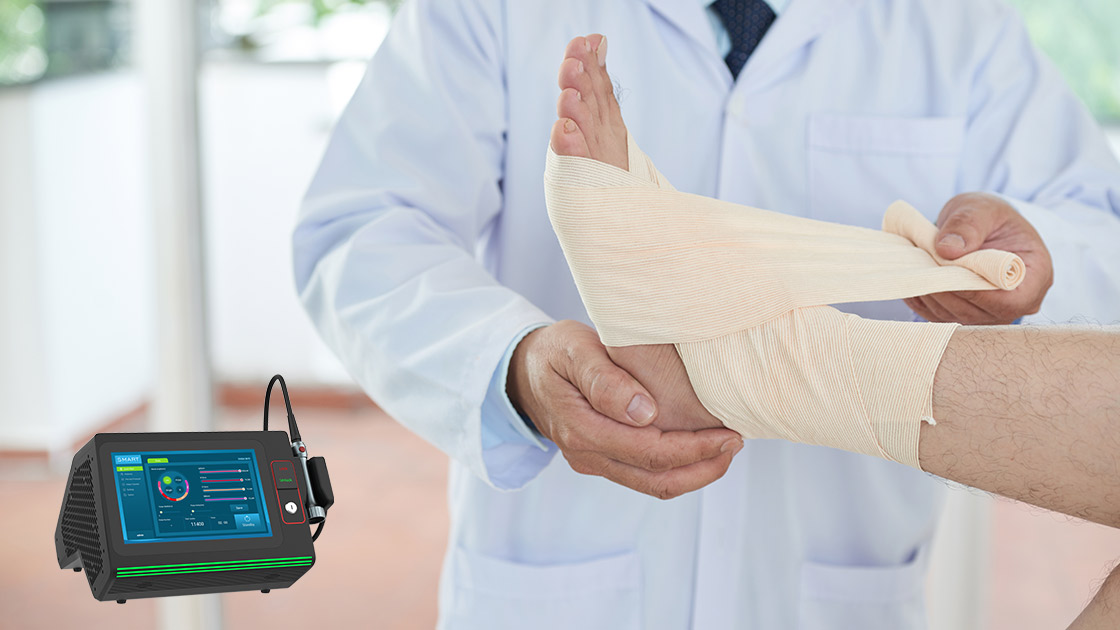Page Contents
Post-surgical wound care is a critical aspect of recovery, impacting both the speed and quality of healing. Among the various methods available to aid this process, Class 4 laser therapy stands out due to its effectiveness and versatility. This advanced therapy offers significant benefits in reducing pain, accelerating healing, and improving overall patient outcomes.
Class 4 Laser Therapy: An Overview
Class 4 laser therapy involves the use of high-powered lasers that penetrate deep into the tissues. Unlike lower-class lasers, it can deliver a higher dose of light energy to the affected area, promoting faster and more efficient healing. These lasers operate at a wavelength that allows them to reach deeper tissues, making them particularly effective for treating surgical wounds.
The primary mechanism behind Class 4 laser therapy is photobiomodulation. This process involves the absorption of laser light by cells, which then triggers various biological responses. These responses include increased cellular energy production, enhanced blood flow, and the release of growth factors and anti-inflammatory agents. Together, these effects contribute to faster wound healing and reduced discomfort for patients.
How Class 4 Laser Therapy Helps
Class 4 laser therapy offers multiple benefits for post-surgical wound care:
Accelerated Healing: By stimulating cellular activity, Class 4 lasers help wounds heal faster. This is particularly beneficial for surgical wounds, which can be prone to complications if healing is delayed.
Pain Reduction: The therapy has a significant analgesic effect, reducing pain and discomfort associated with surgical wounds. This allows patients to recover more comfortably and reduces the need for pain medications.
Reduced Inflammation: Inflammation is a common issue in post-surgical wounds. It helps to decrease inflammation, promoting a more conducive environment for healing.
Enhanced Tissue Repair: The therapy promotes the formation of new blood vessels and collagen, essential components of tissue repair. This not only speeds up the healing process but also improves the quality of the healed tissue.
Integrating Laser Therapy into Post-Surgical Care Plans
Integrating Class 4 laser therapy into post-surgical care plans can be straightforward and highly effective. Healthcare providers can follow these steps:
Assessment: Evaluate the patient’s wound and overall health to determine if it is suitable.
Treatment Protocols: Establish treatment protocols based on the type and severity of the wound. Typically, therapy sessions are short and can be conducted several times a week.
Patient Education: Educate patients on the benefits and process of laser therapy. Address any concerns they might have about the safety and efficacy of the treatment.
Monitoring Progress: Regularly monitor the patient’s progress and adjust the treatment plan as needed. Keep track of healing rates, pain levels, and any potential side effects.
Combining Therapies: Consider combining laser therapy with other wound care practices for a comprehensive approach. This might include proper wound cleaning, dressing changes, and nutritional support.
Key Takeaways
Class 4 laser therapy is a powerful tool in the arsenal of post-surgical wound care. It offers multiple benefits, including accelerated healing, pain reduction, decreased inflammation, and improved tissue repair. Integrating this therapy into post-surgical care plans can enhance patient outcomes and make the recovery process smoother and more comfortable.
By understanding and utilizing this laser therapy, healthcare providers can significantly improve the healing process for surgical patients, leading to faster recoveries and better overall health outcomes. As research continues and technology advances, the role of laser therapy in wound care is likely to expand, offering even more possibilities for effective post-surgical treatment.
